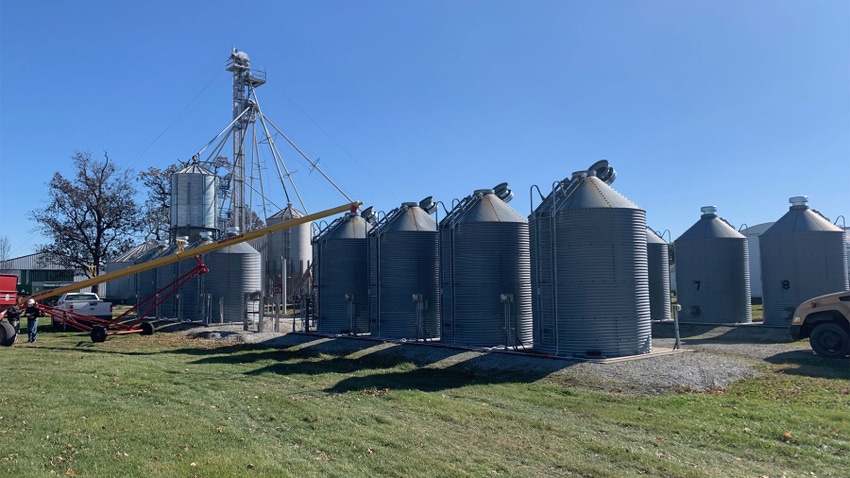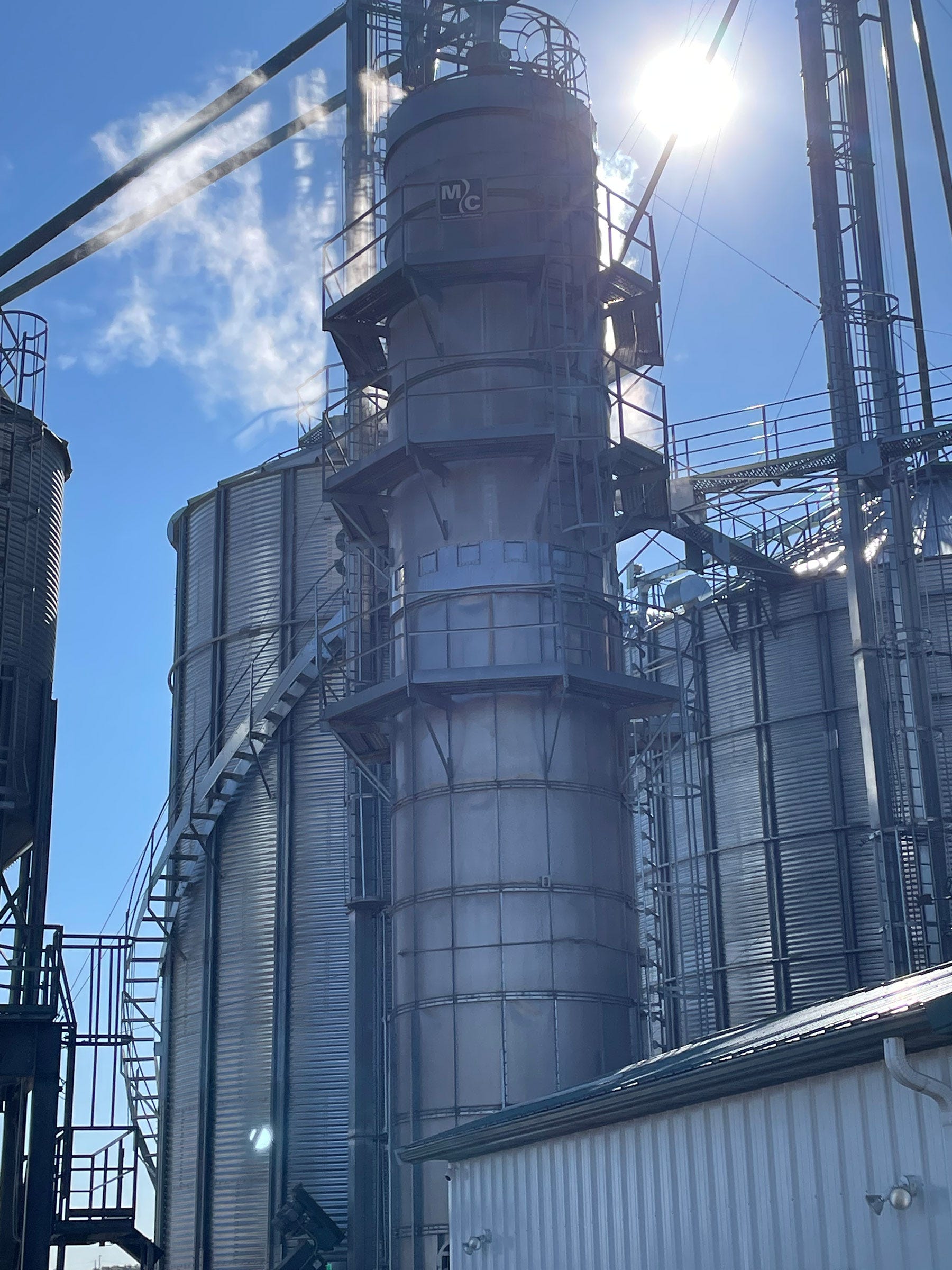August 31, 2023

With harvest nearing, it can be a scramble to get everything cleaned, checked and ready to go. Grain bins should be at the top of that preharvest checklist.
Preparing grain bins and dryers for harvest is key to preventing insects and mold later in the season. It also helps to ensure safety on the farm.
Klein Ileleji, Purdue Extension engineer and professor of agricultural and biological engineering, explains that grain bins should be treated like other pieces of machinery when it comes to harvest preparations.
“During harvesttime, it’s going to be very busy, and one of the things that could be left out is prepping the bins,” Ileleji says. “Just as farmers prepare their combines and equipment for harvest, which is important, the bin is also part of that prep.”
Preparation measures
The take-home message for preparing grain bins for the harvest season is making sure they are thoroughly cleaned. This means ensuring that every piece of old grain is removed from the bin, so it is ready for the new crop.
“When we say clean it, it means thoroughly clean it,” Ileleji adds. “Go in, vacuum old grain out, and vacuum the walls down, if you have grain sticking on the walls.”
Ileleji says farmers should remove the false floors and clean out the bottom of the bin at least every four years.
After bins have been completely cleaned, Ileleji says it is important to spray the walls, floors and up to 6 feet of the outside walls with residual empty bin pesticide, such as beta-cyfluthrin (Tempo SC Ultra). Make sure to check the label and dosage application rates for all products used before applying them.
He also says shrubs and other plants around the bins should be cleared out to deter rodents from entering the bins. Shrubs provide a harborage for rodents.
It is a must to ensure the dryer is cleaned out as well. Ileleji recommends cleaning out fines weekly to prevent fire. He notes there should be adequate fuel on hand for drying.

CLEAN DRYER: Fines should be cleaned out weekly to keep the dryer clean and to prevent fires. Here, a clean grain dryer is shown in operation. (Photo by Dennis Lund)
Aside from cleaning out dryers and bins, it is key to clean out conveying equipment. Any old grain needs to be removed.
“Farmers don’t want to mix any old grain with new grain because that’s where we have insects,” Ileleji says. “You wouldn’t want to have residual insects from last season contaminating the new grain.”
Ilelji also recommends calibrating moisture meters and taking them to a local grain elevator to be checked to avoid any discrepancy between the producer’s believed moisture content and the elevator’s moisture content reading.
Planning for safety
An additional aspect of harvest preparations is planning safety procedures. Ileleji explains that it is important to set aside time with family members and employees to share what the safety measures will look like.
Part of this could be explaining grain bin entry procedures, should this be necessary. Practice lock-out and tag-out procedures prior to any bin entry to ensure no equipment gets turned on when someone is inside a bin. The safest practice is avoiding bin entry, if possible.
“Typically, we advise at least three people to be present when going into a grain bin,” Ileleji adds. “There is the person who goes into the bin, one at the top watching through the manhole and then someone at the bottom.”
Although preharvest preparations can be busy, setting some time aside to discuss safety could prevent situations that could stall harvest. Safety is necessary for a successful crop.
“Ultimately, the success of the crop is how many bushels get into that grain bin safely,” Ileleji says. “For those bushels to get into the grain bin safely, you need to have a well-coordinated, safe harvest.”
About the Author(s)
You May Also Like






